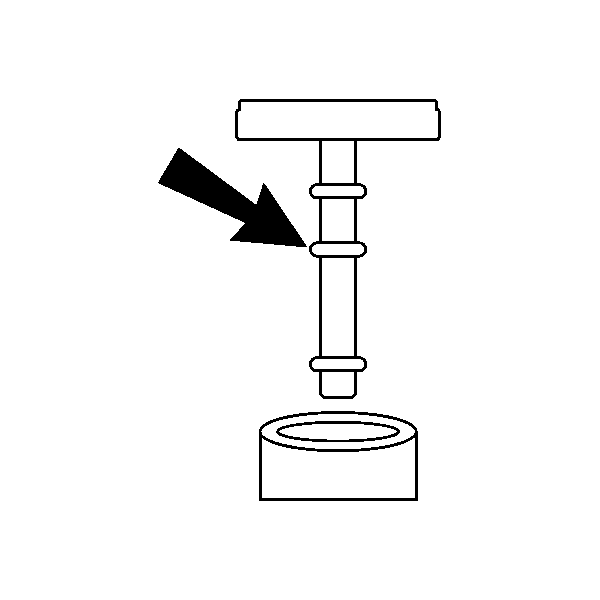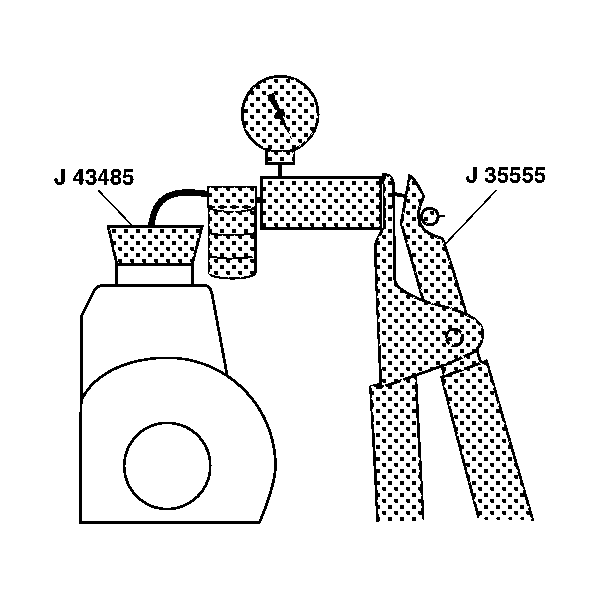Important: Hoses touching the frame, body or engine may cause system noise.
- Verify that the hoses do not touch any other part of the vehicle.
Important: Loose connections may not leak, but could allow air into the steering system.
- Verify that all connections are tight.

Notice: If the power steering system has been serviced, an accurate fluid level reading cannot be obtained unless air is bled from the steering system. The air in the fluid may cause pump cavitation noise and may cause pump damage
over a period of time.
Important: Maintain the fluid level throughout the bleed procedure.
- Remove the pump reservoir cap.
Important: Use clean, new power steering fluid only.
- Fill the pump reservoir with fluid to the Full Cold Level.

- Attach the
J 43485 to the
J 35555 or equivalent.
- Place the
J 43485 on or in the pump reservoir filler neck.
- Apply a vacuum of 0.67 Bar (51 mm Hg) maximum.
- Wait 5 minutes.
Typical vacuum drop is 0.07-01 Bar (5-6 mm Hg). If the vacuum does not remain steady, refer to Excessive Drop diagnosis at the end of this procedure.
- Remove the
J 43485 and
J 35555 .
- Reinstall the pump reservoir cap.
- Start the engine. Allow the engine to idle.
- Turn off the engine.
- Inspect the fluid level. Repeat steps 11-13 until the fluid stabilizes.
Important: Do not turn steering wheel to lock.
- Start the engine. Allow engine to idle.
- Turn the steering wheel 180-360 degrees in both directions 5 times.
- Turn off the ignition.
Notice: When adding fluid or making a complete fluid change, make sure to use the proper power steering fluid. Failure to use the proper fluid will cause hose and seal damage and fluid leaks.
- Inspect the fluid level.

- Remove the pump reservoir cap.

- Attach the
J 43485 to the
J 35555 or equivalent.
- Place the
J 43485 on or in the pump reservoir filler neck.
- Apply a vacuum of 0.67 Bar (51 mm Hg) maximum.
- Wait 5 minutes.
- Remove the
J 43485 and
J 35555 .
- Inspect the fluid level.

- Reinstall the pump reservoir cap.







